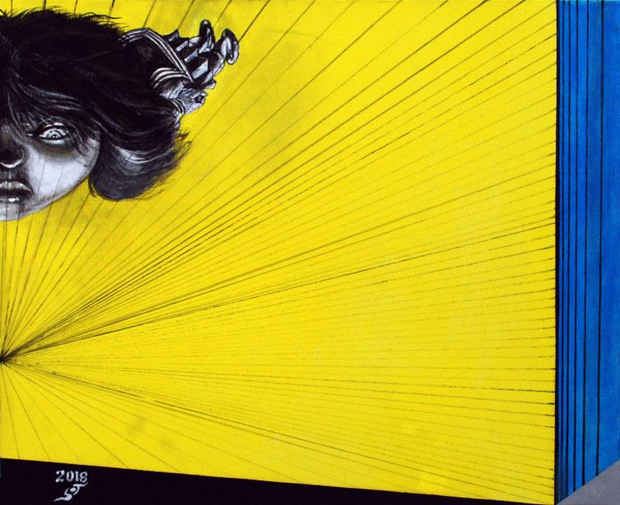Hiroshi Nakamura “Value and Depth”
ULTERIOR

[Image: Hiroshi Nakamura "Value and Depth 7" (2018) Oil on Canvas, 20 7/8 x 25 5/8 in.]
This event has ended.
In conjunction with Japan Society’s Radicalism in the Wilderness: Japanese Artists in the Global 1960s, Ulterior Gallery presents two solo presentations of works by two artists who are leading figures in the Japanese art world of that era.
The front gallery will feature the first U.S. solo exhibition of recent paintings and drawings by Hiroshi Nakamura. Hiroshi Nakamura (1932–) has been known for his surrealist style and politically engaged figurative paintings for six decades. In the 1950s, to document the political condition of postwar Japan, he exhibited raw, confrontational “reportage” paintings, which established him as one of the most critically important artists in Japanese art history. In the years since, Nakamura has developed his own philosophy of painting and become one of the foremost figures working in the surrealist tradition. His work was introduced to an international audience through exhibitions such as Reconstructions: Avant-Garde Art in Japan 1945–1965 at the Museum of Modern Art, Oxford, U.K. (1985); Japon des avant gardes 1910–1970, Centre Pompidou, Paris, France (1986); and Tokyo 1955–1970: A New Avant-Garde at the Museum of Modern Museum, New York (2012–13).
In recent years, Nakamura has further honed his ideas about painting and especially painting technique, focusing on ways to erase conventional signs of its presence in completed works. In the group of recent paintings that will be on view at Ulterior, Value and Depth, he plays with perspective and color value, working with and transforming to his own ends the ideas and traditions of trompe l’oeil painting–an illusionistic art technique much prized by the surrealists. In these paintings, Nakamura uses blue and yellow as opposing colors to enhance a sense of optical illusion— so as to “feel the angle with your eyes,” as the artist puts it.
Nakamura’s most famous icons—junior high school girls in school uniforms—began to appear in his paintings in the 1960s. Nakamura originally considered this character as androgynous, with the sailor uniform symbolizing the masculine and the schoolgirl skirt representing the feminine. For Nakamura, the uniform is associated with regulation, control, and the institutional power of military and pedagogical regimes. In his recent drawings, Nakamura’s girl figure is acting up and acting out. For Nakamura, freedom operates most potently in opposition to restriction and oppression.
Media
Schedule
from March 08, 2019 to April 06, 2019
Opening Reception on 2019-03-09 from 18:00 to 20:00